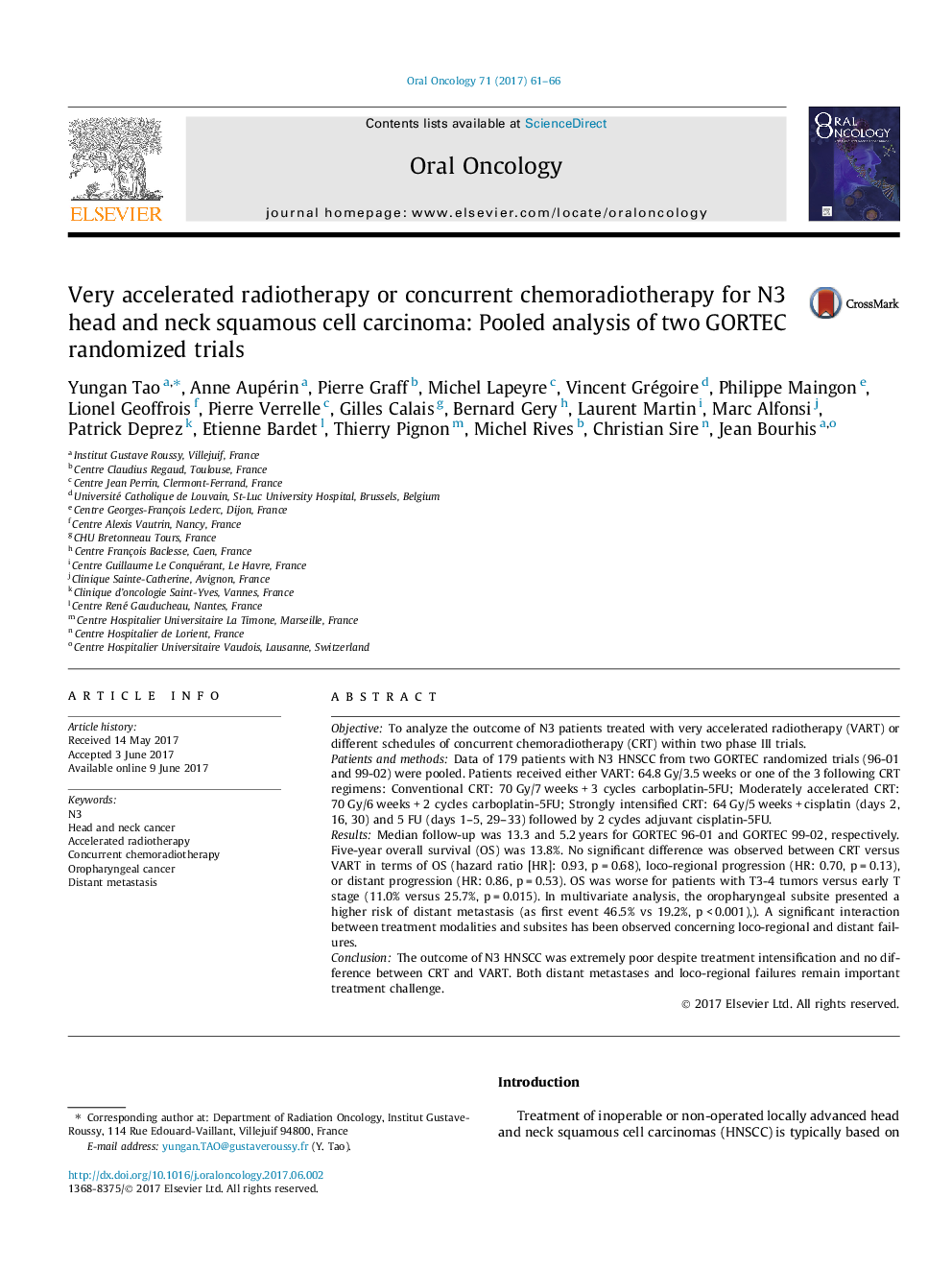| کد مقاله | کد نشریه | سال انتشار | مقاله انگلیسی | نسخه تمام متن |
|---|---|---|---|---|
| 5642640 | 1586239 | 2017 | 6 صفحه PDF | دانلود رایگان |

- Outcome of N3 head and neck cancer within two GORTEC phase III trials was analyzed.
- 5-year overall survival was 13.8% and worse for T3-4.
- No difference between concurrent chemoradiotherapy vs very accelerated radiotherapy.
- Oropharyngeal subsite presented high risk of metastasis.
- We observed significant interaction between treatment and subsite.
ObjectiveTo analyze the outcome of N3 patients treated with very accelerated radiotherapy (VART) or different schedules of concurrent chemoradiotherapy (CRT) within two phase III trials.Patients and methodsData of 179 patients with N3 HNSCC from two GORTEC randomized trials (96-01 and 99-02) were pooled. Patients received either VART: 64.8 Gy/3.5 weeks or one of the 3 following CRT regimens: Conventional CRT: 70 Gy/7 weeks + 3 cycles carboplatin-5FU; Moderately accelerated CRT: 70 Gy/6 weeks + 2 cycles carboplatin-5FU; Strongly intensified CRT: 64 Gy/5 weeks + cisplatin (days 2, 16, 30) and 5 FU (days 1-5, 29-33) followed by 2 cycles adjuvant cisplatin-5FU.ResultsMedian follow-up was 13.3 and 5.2 years for GORTEC 96-01 and GORTEC 99-02, respectively. Five-year overall survival (OS) was 13.8%. No significant difference was observed between CRT versus VART in terms of OS (hazard ratio [HR]: 0.93, p = 0.68), loco-regional progression (HR: 0.70, p = 0.13), or distant progression (HR: 0.86, p = 0.53). OS was worse for patients with T3-4 tumors versus early T stage (11.0% versus 25.7%, p = 0.015). In multivariate analysis, the oropharyngeal subsite presented a higher risk of distant metastasis (as first event 46.5% vs 19.2%, p < 0.001),). A significant interaction between treatment modalities and subsites has been observed concerning loco-regional and distant failures.ConclusionThe outcome of N3 HNSCC was extremely poor despite treatment intensification and no difference between CRT and VART. Both distant metastases and loco-regional failures remain important treatment challenge.
Journal: Oral Oncology - Volume 71, August 2017, Pages 61-66